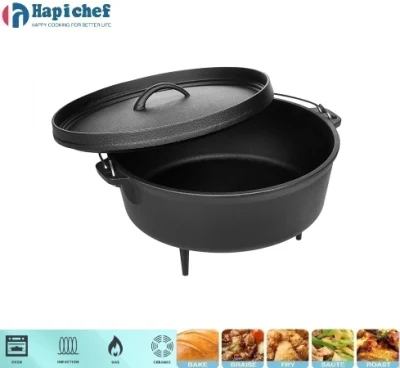Using a Cast Iron Skillet on a Glass Top Stove Safely and Effectively
The Pros and Cons of Using a Cast Iron Skillet on a Glass Top Stove
When it comes to cookware, few items are as beloved and versatile as a cast iron skillet. Renowned for its heat retention and even cooking, a cast iron skillet can be utilized for a wide range of culinary tasks, from frying to baking. However, if you own a modern glass top stove, you might be wondering whether using a cast iron skillet is a good idea. While there are distinct advantages to using cast iron on glass, there are also a few potential drawbacks to consider.
Advantages of Using Cast Iron Skillet on Glass Tops
1. Exceptional Heat Retention Cast iron skillets are praised for their ability to hold heat exceptionally well. When you preheat the pan, it creates a very even cooking surface, which can enhance your culinary results, particularly for techniques like searing meat or frying vegetables.
2. Durability Cast iron cookware is known for its durability. It can last for generations when properly cared for, making it a worthwhile investment in your kitchen. This longevity can be especially appealing for those who frequently cook at home.
3. Versatility A cast iron skillet can be used for a variety of cooking methods—searing, baking, frying, and even slow-cooking. If you find yourself preparing different types of meals, having a single piece of cookware that performs well in various roles can simplify your cooking process.
4. Enhanced Flavor Many chefs and home cooks swear by the flavor that a well-seasoned cast iron skillet brings to food. The natural non-stick surface of a properly maintained skillet can enhance the taste and texture of your dishes.
cast iron skillet on glass top

Disadvantages of Using Cast Iron on Glass Tops
1. Weight One major consideration is the weight of a cast iron skillet. These pans can be quite heavy, and placing or dragging a heavy skillet across a glass top stove can potentially lead to cracking or scratching. Care must be taken to avoid sudden movements that could cause damage.
2. Uneven Heating Glass top stoves often have a smooth surface that may not distribute heat as evenly as other cooking surfaces like gas or traditional electric stoves. Because cast iron retains heat so efficiently, it can create hotspots, which might lead to uneven cooking if not monitored carefully.
3. Scratches and Damage Aside from potential cracking, dragging a heavy cast iron skillet can cause scratches on the glass surface. To avoid this, it is advisable to lift the pan when moving it rather than sliding it across the stove; this will help maintain the integrity of both your cookware and your stove.
4. Temperature Sensitivity Glass top stoves can take longer to adjust to temperature changes compared to other types of cooking surfaces. Therefore, when cooking with cast iron, it's essential to be mindful of the heat settings and allow for gradual temperature adjustment to prevent thermal shock that could crack either the skillet or the cooktop.
Conclusion
Using a cast iron skillet on a glass top stove offers several benefits, including excellent heat retention and versatility, which can enhance your cooking experience. However, it's crucial to be aware of the potential pitfalls, such as the weight of the skillet and the risk of damage to your glass surface. By exercising care and adopting proper cooking techniques, you can enjoy the unique benefits of cast iron cookware while maintaining your glass top stove in optimal condition. Whether you’re sautéing vegetables or baking cornbread, a cast iron skillet can undoubtedly elevate your culinary adventures, provided you keep these considerations in mind. Happy cooking!
-
Why Every Kitchen Needs a Casserole Cast Iron DishNewsJun.24,2025
-
Experience the Tradition and Quality of Cast Iron CookwareNewsJun.24,2025
-
Double Sided Cast Iron Grill PanNewsJun.24,2025
-
Cast Iron Dutch Ovens You’ll Actually UseNewsJun.24,2025
-
Buy Cast Iron Griddle for Everyday CookingNewsJun.24,2025
-
Barbecue Iron Grill Cooking PowerNewsJun.24,2025
-
Standard Product Lines from Cast Iron Cookware SuppliersNewsJun.11,2025
